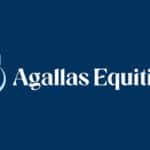Philadelphia is known for embracing the Hispanic community, welcoming people from various nationalities and cultures, especially the Hispanic culture, which has contributed to a steady growth in the population, representing 16.1%.
Immigration has become a significant driver of population growth in Philadelphia in recent years, with long-term demographic and economic implications for the city and the region.
The Hispanic population in Philadelphia has been steadily growing for over a decade, reversing more than half a century of decline. Since hitting a low point in 2006 at 1,488,710, the number has increased every year. According to the U.S. Census Bureau, the number of people living in the city and its surrounding counties grew by 5%, and the Hispanic population grew by 36%.
Population growth in Philadelphia has been largely driven by immigrants. From 2000 to 2016, the number of foreign-born residents increased by approximately 95,000, while the number of U.S.-born Philadelphia residents decreased by 44,500.
You can read:Hispanic Heritage Month Gala Honors Latino Leaders’ Contributions
Philadelphia experienced a dramatic increase in the size of its immigrant population, with over a quarter of all residents being foreign-born or U.S.-born with Hispanic parents. Beyond the numbers, Philadelphia’s immigrant population is highly diverse, with various cultures represented from Mexico, Puerto Rico, the Dominican Republic, Venezuela, Colombia, Cuba, and other Hispanic countries.

The census detailed that Philadelphia’s Latino population consisted of 121,643 Puerto Ricans, 15,532 Mexicans, 3,930 Cubans, and 46,507 of other Hispanic ancestries.
Philadelphia, like many other U.S. cities, benefits greatly from the contributions made by the Hispanic community in various areas, including gastronomy, arts, public service, business, customer service, media, commerce, and more.
Since 1990, Philadelphia has become a growing destination for immigrants, a status it hadn’t held since the early 20th century. According to the Pew Research Center, at its peak in the 1850s, the city’s foreign-born population proportion was 30%, more than double the national percentage at the time. The city was home to 1 in 20 immigrants nationwide.
After the federal government restricted immigration in the 1920s, the population steadily declined in Philadelphia, as in most cities. Then, starting in the 1970s, the number of immigrants increased in many older cities like Chicago and newer ones like Houston, where it quadrupled by 1990. But not in Philadelphia, where it dropped to a low of 6.4% in 1980.
Academics labeled Philadelphia a “low-immigration city” compared to its large-city peers, a condition attributed in part to the region’s slow-growing economy.
Change came in the 1990s. By 2010, immigrants flocked to Philadelphia, with their total presence exceeding 232,000 in 2016, the highest number since 1950.
From 2000 to 2016, the immigrant community grew by approximately 95,000, or 69%, compared to 41% nationally and 27% in benchmark cities.

Foreign-born Workers
The number of foreign-born workers also increased by around 89%, faster than the nation as a whole, which saw a 52% increase, and benchmark cities, with a 36% average increase. Researchers agree that the number of low-skilled and unskilled job opportunities grew in sectors where immigrants typically find work, such as healthcare and consumer services.
You can read:Carlos Adyan: Journalist, TV Host, model and influencer
In 2016, nearly 1 in 5 Philadelphia residents in the workforce were immigrants, and they worked in service jobs in healthcare, education, hospitality, and retail sectors. As immigrants grew in numbers, they established cultural support networks and organizations, making the region more attractive to their relatives and compatriots.
These cultural support organizations have left a significant legacy in the immigrant community and the city. Through various services, including education and healthcare, they have helped the most vulnerable individuals. Additionally, these organizations have highlighted and shared their culture through events that fill the city with color and the infectious charisma that clearly identifies the Hispanic community.
Some of the events that have become cultural icons in the city, attended by both Hispanics and residents, include the Feria del Barrio, the Puerto Rican Day Parade, Mexican Independence Day, Hispanic Fiesta, Venezuelan Independence Day, Colombian Independence Day, Hispanic Heritage Month, among others.

National Hispanic Heritage Month
National Hispanic Heritage Month begins on September 15 and extends through October 15, providing Philadelphia and the United States with the opportunity to recognize and celebrate community members and their ancestors.
Rather than starting in early September, Hispanic Heritage Month is celebrated for 30 days from September 15, in relation to the national independence anniversaries of various Latin American countries. Costa Rica, El Salvador, Guatemala, Honduras, and Nicaragua recognize September 15 as their independence date, while Mexico’s is celebrated on September 16, and Chile’s on September 18.

































 Noticias Newswire
Noticias Newswire














































